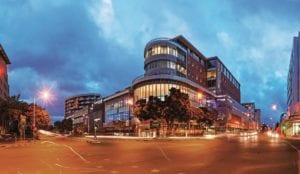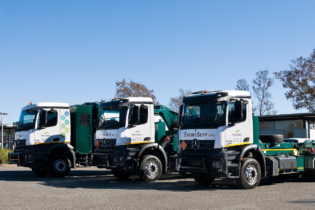
Exterior of Growthpoint’s Montclare building.
Over 20% of Growthpoint’s R76.9billion South African property portfolio is located in the Western Cape prompting the company to intensify water saving efforts at its buildings.
Cape Town’s recently announced Level 5 Water Restrictions require all commercial properties to reduce their monthly consumption of municipal drinking water by 20% compared to consumption for the previous year. Growthpoint is already well on its way to achieving this target.
Already, it has reduced consumption of municipal drinking water by an average of 16%, comparing a 12-month period ending February 2016 with a 12-month period ending July 2017, across its entire Cape Town office portfolio. Growthpoint expects to see even further savings as new data comes in, taking it within reach of a total 20% reduction.

Head of Sustainability at Growthpoint, Werner van Antwerpen.
Head of Sustainability at Growthpoint, Werner van Antwerpen, explains that achieving meaningful water savings at an any building that you own, but others use, isn’t easy.
Knowing your consumption
For Growthpoint, the first step to achieving real, quantifiable water savings is knowing exactly how much water each building uses. Office buildings are then benchmarked against the Energy Water Performance (EWP) tool developed by the Green Building Council of South Africa (GBCSA) and co-sponsored by Growthpoint.
Growthpoint has conducted detailed water audits of its office buildings to gauge their water efficiency and improve it.
In February 2016, a solid 40% of the company’s office buildings performed better than the EWP industry benchmark, which takes 12 months of water consumption into consideration, as well as various other factors.
Buildings not performing better than the benchmark were audited to discover the reasons behind their higher consumption and water savings initiatives were identified and implemented.
Smart solutions
Immediate solutions Growthpoint applied to reduce its buildings’ water consumption include halting all irrigation and water features, installing water-efficient fittings including tap aerators and dual-flush toilets, and working with the clients of its buildings to encourage behavioural change.
Also, Growthpoint has invested, and is still investing, in smart water meters for several buildings, which is proving to be one of its most successful water saving initiatives. These meters help to quickly identify leaks that could otherwise go undetected for weeks, even months.

Timothy Irvine, Growthpoint’s Regional Asset Manager for the Western Cape
With smart water meters consumption data is measured every 15 minutes. This allows facilities management teams to respond to leaks within hours, instead of weeks.
“We are being vigilant about saving water, and we are not alone. By engaging with the businesses that occupy our buildings and the people who use them, we can react” says Timothy Irvine, Growthpoint’s Regional Asset Manager for the Western Cape.










